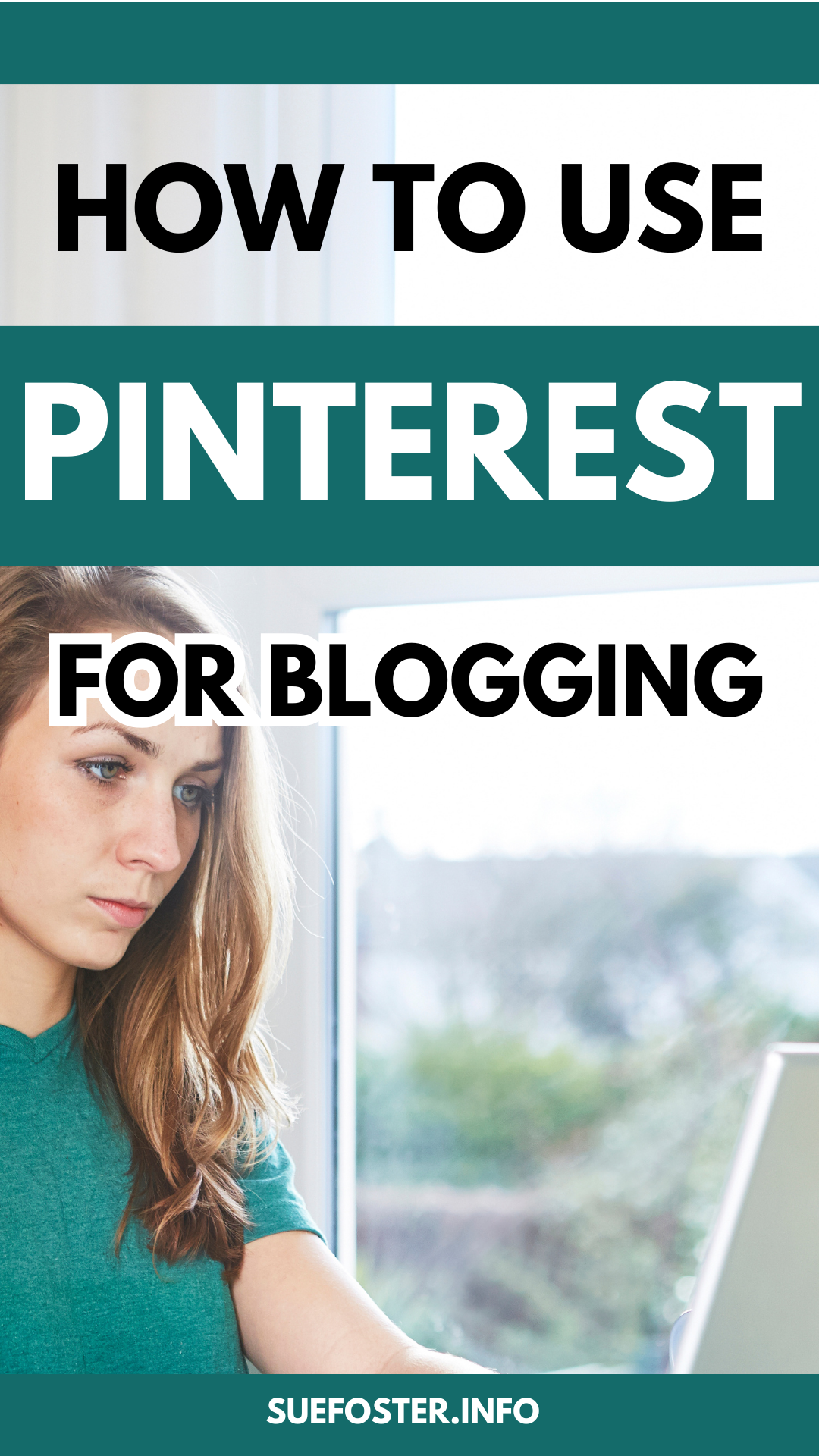Pinterest can be a valuable platform for bloggers to promote their content, drive traffic to their websites, and engage with a broader audience. Here’s a step-by-step guide on how to use Pinterest effectively for blogging:

Create a Pinterest Business Account
If you don’t already have one, sign up for a Pinterest business account. This type of account offers analytics and other features specifically designed for businesses and bloggers.
Optimise Your Profile
Choose a profile picture that represents your blog or brand. This can be your logo or a picture of yourself.
Write a compelling bio that describes your blog and what you offer. Use keywords related to your niche.
Claim Your Website
Verify and claim your blog’s website on Pinterest. This step is crucial as it allows you to track performance and access analytics for your website pins. Pinterest guides you through the process, it’s a case of adding a piece of code to your blog.
Create and Organise Boards
Create boards related to your blog’s niche or topics you cover. Use keyword-rich board titles and descriptions.
Organise your boards in a logical and visually appealing manner. You can use board covers if you wish for a professional look, this doesn’t affect your account’s performance though, it’s more cosmetic.
Pin High-Quality Content
Pin images and graphics from your blog posts to relevant boards. Ensure that your pins are visually appealing and include text overlay if necessary. I use Canva to create my pins. If you are short on time there a plenty of pin template bundles on Creative Fabrica ready to use on Canva.
Use vertical images (ideally with a 2:3 aspect ratio) as they perform better on Pinterest. It is not the law though; you can use square pins, and I often do this.
Consistency is key. Pin regularly to keep your profile active.
Keyword Research
Pinterest is essentially a search engine. Use keyword research tools (like Pinterest’s own search bar or third-party tools) to find trending keywords in your niche.
Incorporate these keywords into your pin descriptions, board titles, and board descriptions.
Engage and Collaborate
Engage with other Pinterest users by repinning, liking, and commenting on their content.
Collaborate with other bloggers or influencers in your niche by participating in group boards.
Create Rich Pins
Rich Pins provides additional information directly on the pin, such as product details, article headlines, and author information. This can make your pins more informative and engaging.
Use Pinterest Analytics
Regularly check your Pinterest Analytics to understand which pins and boards are performing well. Adjust your strategy based on this data.
Promote Seasonal and Trending Content
Keep an eye on seasonal trends and holidays. Create and pin content that is relevant to current events and trends in your niche.
Enable Pinterest Sharing on Your Blog
Add Pinterest share buttons to your blog posts and images to encourage your readers to pin your content.
Track and Measure Results
Monitor your Pinterest referral traffic in your website analytics (e.g., Google Analytics) to see how much traffic Pinterest is driving to your blog.
Stay Consistent and Patient
Building a presence on Pinterest takes time. Be consistent with your pinning and engagement efforts, and don’t get discouraged if you don’t see immediate results.
Experiment and Test
Try different types of pins, headlines, and posting schedules to see what works best for your audience. Pinterest is continually evolving, so adapt your strategy accordingly. To save yourself time, invest in Tailwind which allows you to schedule pins and it will automatically post them for you. Tailwind has lots of other features you might like to check out.
Remember that Pinterest is a long-term strategy for blog promotion. Over time, your pins can continue to drive traffic to your blog, making it a valuable tool for bloggers.


